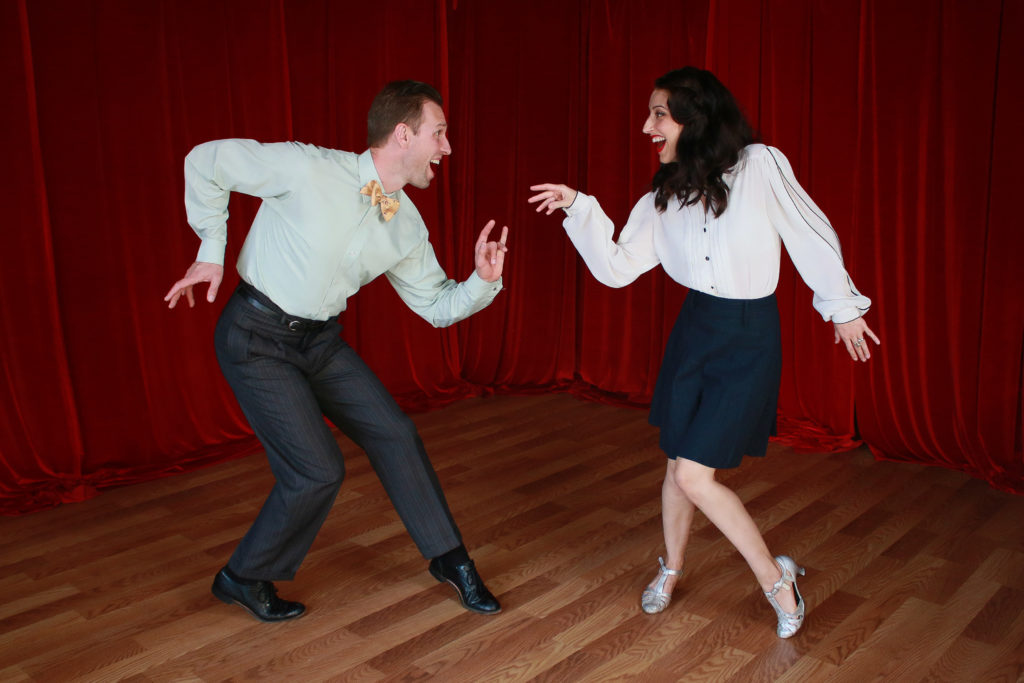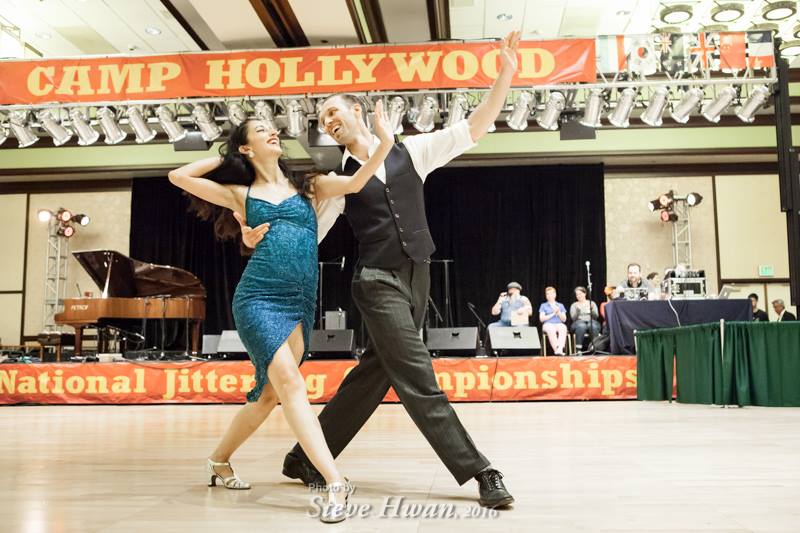How to Practice (Without Arguing)

When I was first training with Dax, I couldn’t tell you how many fights I picked with him while practicing. I was frustrated when he was able to articulate what I could not, I was angry when I couldn’t understand what he needed from me and upset I couldn’t communicate what I needed from him. I will be honest, part of the reason things got better was that I got better at dancing. That being said, I learned a lot of tools in the process to have a successful practice session at any level. Dax and I don’t argue as much during practice anymore but if we do it’s pretty textbook why.
Here are the core approaches Dax and I take to our practice.
- We focus on fixing ourselves first when something is not working.
- We define the problem, not place blame.
- We use outside tools when needed (like filming ourselves, singing, or asking a friend).
- We fix connection problems with solo body movement practice.
- We verbally establish our goal for that moment of focus before any dancing begins.
- We take a break (or eat) when needed.
Fix Yourself First
I have been able to find self-improvement with every issue that has arisen during a practice session. When a problem (or weak point) arises during practice, approach it with the mindset of “if my partner changed nothing, what can I do to fix this issue?”. Try to work through answering this question before you start telling your partner what you think they are doing wrong. Here are some common moments where people place blame before they have done proper self-reflection:
My Leader is too strong.
Maybe! Or maybe you are not reactive enough or not matching your partner‘s energy. Maybe you have too much excess tension or don’t know where to put your feet for balance.
My Follower is too heavy.
Maybe! Or maybe you are in a weak position. Maybe you are not good at adapting to different followers. Maybe you don’t have the right mindset. Maybe your follower is matching YOUR heaviness.
In every moment of conflict, I ask myself, “What can I improve on to reach my goal?” Then, when I approach Dax I can say, “Here is my problem. I have tried x,y,z. Can you try doing [this] for me?”.
Remember, you can’t rely on other people to be perfect on the social dance floor anyway so defaulting to working on your own issues is more empowering and practical of a skill.
What is Really the Issue?
When student couples approach me with an issue I almost always hear something like, “She is… “ or “He is…” I want to stop them right there. Like I explained in the first example, you don’t really know who is causing what (which is another reason why you should be hesitant to give feedback in class or on the dance floor). Teachers might say something like, “She needs more momentum.” A statement like this is not placing blame. It is ideally the responsibility of both sides to create momentum for the follower. So stop saying, “You are too heavy,” and start saying, “I am having a hard time holding your weight. Let’s explore this.”
Outside Tools
 In an ideal world, you would be meeting with your dance teacher/mentor often. Private lessons are usually not in one’s budget, so here are some budget-friendly tools to serve as an outside perspective with no bias:
In an ideal world, you would be meeting with your dance teacher/mentor often. Private lessons are usually not in one’s budget, so here are some budget-friendly tools to serve as an outside perspective with no bias:
RhythmJuice (or any other online guided platform)
The great thing about RhythmJuice is it can supplement your need for one-on-one attention from a mentor at a 10th of the cost. It’s flexible to fit your budget and goals as a dancer. You can opt for feedback anytime you are doubting your progress.
 A Camera
A Camera
No matter what level you are at, there will always be a certain level of disconnect between the way you think you look and the way you actually look. You can also use filming to compare your basics and stylings as well as compare your movement to a higher level dancer.
 Group practices
Group practices
If you don’t have access to a teacher, ask a group of friends to meet up. This group dynamic will offer you motivation and inspiration beyond practicing alone at times. If you live in Los Angeles, we have a RhythmJuice Community Center where you can meet other RJ members to practice during our open times or in one of our guided practice sessions.
Singing (Making Noise)::
This is me practicing COTM 3.2017 and let me tell you it wasn’t easy. Dax always says that there are more great tap dancers in the world because you can hear how good you are immediately. There are clear goals and levels of skill in most other dances and sports (either you make it in the net or you don’t). For various arguments, swing has a more abstract definition of what is good or not. This can be a beautiful thing and a frustrating thing. Consider singing your new best friend. Working on rhythm? Sing the exact rhythm before you try to dance it. Working on connection? Sing the way you want it to feel as you do it. Working on choreography? Sing the steps.
Singing should be happening during a large part of your practice.
Fix Your Body First
When I glance over at people practicing, I see them usually holding and looking down at their hands as they talk about how something should feel. Here are two scenarios where I was able to fix the connection in a few seconds without talking (and potentially upsetting) my partner:
- I was dancing in a closed position with Dax and something was not working. I wondered if my arms were too loose or the spacing between us was off and then I realized what I needed to do! I asked Dax to keep dancing but I let go and took a step back. I started to mirror his dancing until I realized our body movement was a tiny bit different. Once I understood the way his body was moving I could adjust my movement and it worked. I was able to respond to him with ease.
- I was on the social dance floor and no matter what follower tool I pulled out of my toolbox I couldn’t feel connected to my partner. Our timing was off in a way that was causing me to miss their signals. Within a few phrases, I realized my groove was slightly more vertical than his. This slight difference made our timing (i.e. releasing and contracting) off. I smoothed out my overall groove and the rest of our dance felt completely connected.
When exploring a solution to your problem, try working on the body movement first and see if that solves your problems.
Set Your Goal And Shout it From the Mountains
You can’t focus on “being the perfect follower” and learning the move at the same time just like you can’t expect the leader to be perfect at leading you while they are just trying to figure out where to put their feet.
Before any practice takes place (even when you are in a classroom setting), think about what your goal is for that moment. Are you trying to learn the choreography of a new move? Work on reacting to your partner’s initiations? Improve your rhythmical footwork? How about working on successfully getting through something with a lower level partner? Exploring technicalities like stretch and momentum. Or adding dynamic changes.
These are all different and specific goals that require individual attention. Once you know your goal, verbally talk about it with your partner. Sometimes you need to be on working on the same goal and sometimes you don’t but you need to both have the clear expectations.
Eat A Sandwich
Know when to quit while you’re ahead. If I feel like I’m getting too frustrated to work efficiently and respectfully, I tell Dax I need a break. This isn’t a punishment towards the other person, it is a valid preventative measure. Also, like common sense, stay healthy. Eat, drink water, and rest so you don’t bring any baggage into practice.
Ready to get the guidance you need? Sign up today!
Now it’s your turn:
What tools have you used to help you practice? How have you and your partner handled moments of conflict when practicing?
Write your thoughts in the comments below!




